#frescoes
Explore tagged Tumblr posts
Text
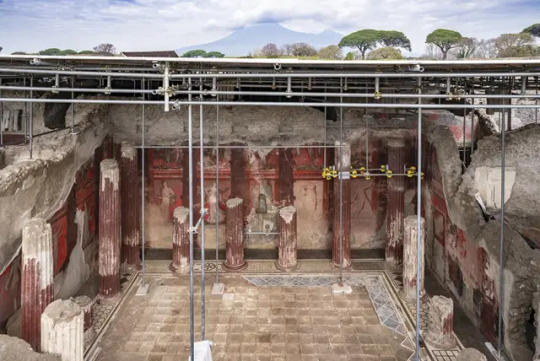
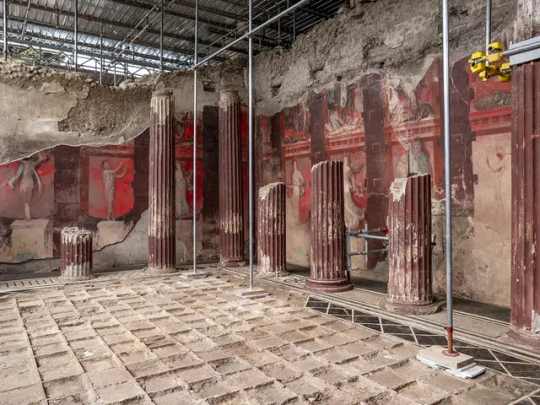
Stunning Frescoes of a Mysterious Dionysian Cult Discovered in Ancient Pompeii
Created more than a century before the eruption of Mount Vesuvius in 79 C.E., the wall paintings provide rare insights into secret rituals conducted in the Roman city.
Archaeologists in Pompeii have uncovered a series of nearly life-size frescoes spanning three walls of an ancient banquet hall. Set against a ruby-red backdrop, the wall paintings depict female followers of Dionysus—the Greek god of wine and ecstasy—engaged in secretive cult rituals.

Also known as maenads or bacchantes, the women have swords in their hands and slaughtered animals draped across their bare shoulders. Alongside flute-piping satyrs, they’re engaged in a wild, ritualistic dance, while shellfish, eels, squid and poultry dangle above them. In the center of it all, a clothed woman awaits her initiation into the cult.
Pompeii is full of colorful frescoes, but this one is particularly rare. The only other large wall painting depicting a Dionysian ceremony was unearthed in the so-called Villa of the Mysteries in the ancient city’s suburbs in 1909, according to a statement from the Pompeii Archaeological Park.
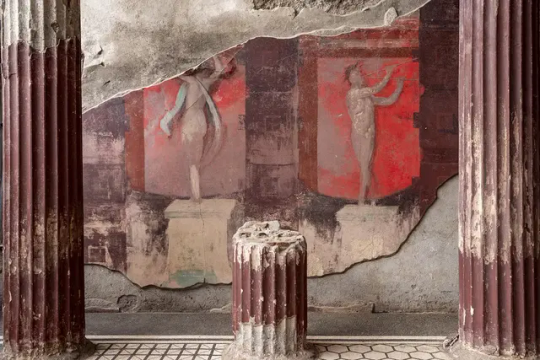
Known as a megalography—a Greek term for a large-scale painting—the banquet hall fresco was uncovered at the newly excavated House of Thiasus. It dates to the first century B.C.E., more than 100 years before Mount Vesuvius erupted in 79 C.E. and cast pumice and ash down upon Pompeii.
“In 100 years’ time, today will be remembered as historic,” Alessandro Giuli, the Italian culture minister, told reporters at the unveiling of the wall paintings on Wednesday, per Reuters’ Crispian Balmer. “Alongside the Villa of the Mysteries, this fresco forms an unparalleled testament to the lesser-known aspects of ancient Mediterranean life.”
As Giuli suggests, the festivals depicted in the frescoes were thoroughly secretive, even in antiquity.
“These were mystery cults, so what they did remains a mystery, even in the ancient written sources,” Sophie Hay, an archaeologist at Pompeii, tells the London Times’ Philip Willan.

Even so, the frescoes at Pompeii offer valuable insights into what worship of Dionysus, also known as the Roman god Bacchus, entailed.
Wine, of course, was central to these festivities. But researchers think cult members may have also consumed other substances, like opium, to enter “trance-like states,” Live Science’s Kristina Killgrove writes.
The women in the fresco are both hunters and dancers, suggesting that the duality of slaughter and revelry was a central tenet. The clothed, mortal woman who is awaiting initiation is depicted as “oscillating between these two extremes, two forms of the female being at the time,” Gabriel Zuchtriegel, director of the archaeological park, says in the statement.

“For the ancients, the bacchante or maenad expressed the wild, untameable side of women; the woman who abandons her children, the house and the city, who breaks free from male order to dance freely, go hunting and eat raw meat in the mountains and the woods,” he adds. In contrast, Zuchtriegel explains, were the women who emulated the goddess Venus and lived by the dictates of Roman society.
“The question is, what do you want to be in life, the hunter or the prey?” Zuchtriegel told reporters at the unveiling.
The hunting scenes may also stand as analogues for life and death. In the House of Thiasus, one woman eats raw meat. At the Villa of Mysteries, one breastfeeds a young goat.
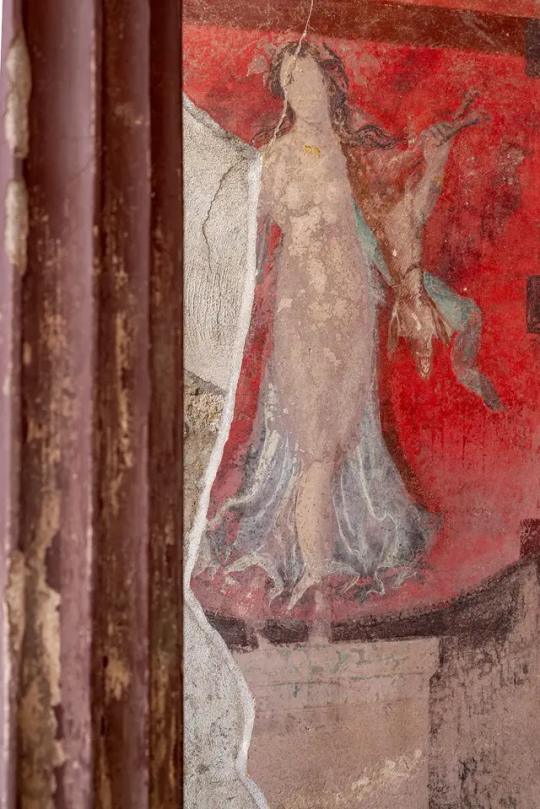
“It’s the double function of death and rebirth. Dionysus dies and is reborn. Through initiation into the cult, you are born again,” Zuchtriegel says to the London Times.
By 186 B.C.E., these festivals were at risk of dying out, as Roman authorities attempted to crack down on the scandalous ceremonies. But the presence of the paintings in the House of Thiasus and the Villa of Mysteries suggest that the secret rituals survived.
Although archaeological work continues, the frescoes are now on public display.
By Eli Wizevich.
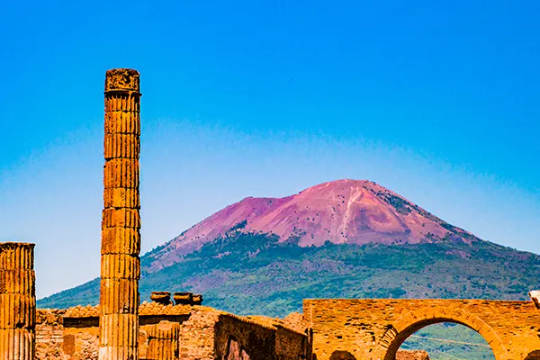

#Pompeii#Stunning Frescoes of a Mysterious Dionysian Cult Discovered in Ancient Pompeii#Mount Vesuvius#frescoes#ancient artifacts#archeology#history#history news#ancient history#ancient culture#ancient civilizations#roman history#roman empire#roman art#ancient art
2K notes
·
View notes
Text
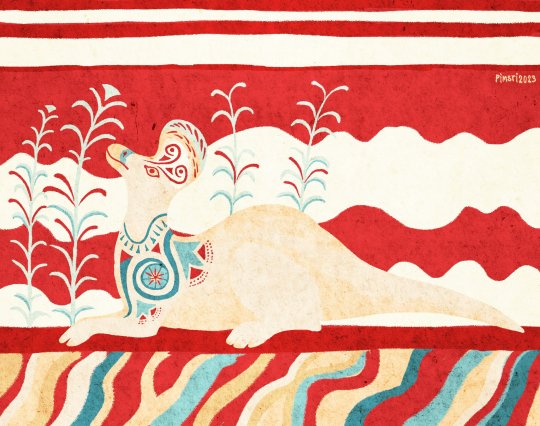



Paleo art inspired by Minoan frescoes
#pimsriart#pimsriart2023#paleoart#paleo art#paleontology#dinosaur#marine reptile#animal#minoan#minoan frescoes#frescoes#art history#ancient greece#triceratops#lambeosaurus#microraptor#mosasaurid
16K notes
·
View notes
Text

#medieval#middle ages#knights#knight#tournament#jousting#joust#lance#hunting#hunters#art#history#europe#european#frescoes#fresco#nobility#italy#florence#azzo di masetto#northern italy#museum#san gimignano#sala di dante#siena#fondazione musei senesi#italian#dogs#hounds#musei civici di san gimignano
620 notes
·
View notes
Text


Santa Maria della Scala, once a civic hospital dedicated to caring for abandoned children, the poor, the sick and pilgrims.
Siena, Tuscany
Dec. 2019
#siena#tuscany#toscana#travel#italia#italy#architecture#architecture photography#historical architecture#medieval#medieval art#fresco#original photography#photographers on tumblr#photography#lensblr#frescoes#fresco painting#wandering#museum#museum photography#medieval architecture#wanderingjana
461 notes
·
View notes
Text



Minoan frescoes. The 1600s BC was a great time for fashion.
#art#art history#ancient history#history#ancient greece#greece#frescoes#fresco painting#minoan#minoans#minoan civilization#bronze age#fashion#fashion history#history of fashion#ancient civilizations
2K notes
·
View notes
Text

London’s Largest Ancient Roman Fresco Makes for the ‘World’s Most Difficult Jigsaw Puzzle’
187 notes
·
View notes
Text

Lucretia Borgia Reigns in the Vatican in the Absence of Pope Alexander VI (Frank Cadogan Cowper, 1908-14)
#red#vatican#pope#catholicism#the borgias#borgias#borgia#lucrezia borgia#lucretia borgia#frank cadogan cowper#the tate#tate museum#female power#cardinals#quail#frescoes#fresco#italian#gold#luxurious#religious imagery#religious motif
189 notes
·
View notes
Text


Church of S. Giovanni Battista in Racconigi (Italy)
#italy#racconigi#italia#church#catholic church#giovanni battista#italian architecture#italian art#artedit#sinner#art#architecture#frescoes#ceiling#fresco#aesthetic#photography
753 notes
·
View notes
Text








A glimpse of some frescoes inside the Vatican Museum, along with a bonus shot of one of my favourite mosaics.
#i spent ages gazing up at the frescoes analysing every detail and pondering their meanings#to the point where i finished the visit with a sore neck lol#art#mosaic#frescoes#vatican#vatican museum#italy#travel
216 notes
·
View notes
Text

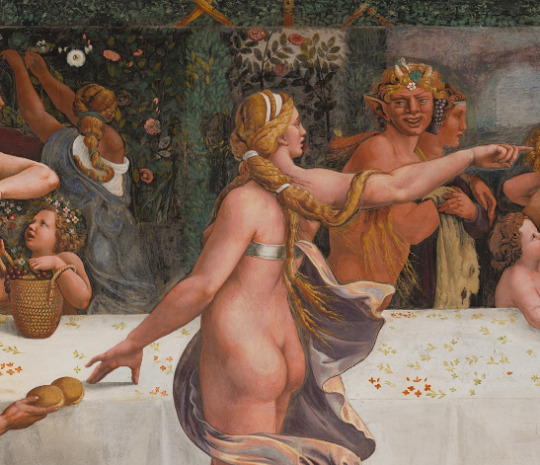

Details from the room of Cupid and Psyche in Palazzo Te, Giulio Romano, 1526-28
#art history#art#italian art#aesthethic#greek mythology#ancient greece#roman mythology#giulio romano#frescoes#palazzo te#mantua#mantova#cupid#psyche#cupid and psyche#zeus#olympias#banquet#bacchanalia#faun#16th century#rinascimento
945 notes
·
View notes
Text

Tiny House with Elaborate Frescoes Unearthed at Pompeii
Archaeologists have uncovered a tiny house in Pompeii that is filled with elaborate – and sometimes erotic – frescoes, further revealing the ornate way in which Romans decorated their homes.
Situated in the central district of the ancient city, the house is smaller than normal and unusually lacks the open central courtyard – known as an atrium – that is typical of Roman architecture, the Archaeological Park of Pompeii, which oversees the site, said in a statement Thursday.
This change could have occurred due to shifting trends in Roman - and particularly Pompeian - society, during the first century AD, archaeologists said.
Pompeii was destroyed by the eruption of Mount Vesuvius in AD 79 when its buildings and thousands of inhabitants were buried beneath layers of ash and pumice. This coating perfectly preserved the city for millennia, making it one of the most important archaeological sites in the world as it offers an unprecedented insight into Roman daily life.



This latest discovery spotlights the ornate decorations that rich Romans enjoyed in their homes – several frescoes depict mythical scenes and others are decorated with plant and animal motifs on a white background.
One small square painting set against a blue-painted wall depicts intercourse between a satyr and a nymph, while another shows Hippolytus, son of the mythical Greek king Theseus, and his stepmother Phaedra who fell in love with him before killing herself when he rejected her in disgust.
One fresco likely portrays the Judgement of Paris, though it has been damaged by previous excavations, and another shows Venus, the goddess of love, and Adonis, her mortal lover.
Erotic and elaborate frescoes like this have been uncovered in Pompeii before. One house covered in erotic frescoes reopened to the public in January 2023 after being closed for 20 years while another fresco depicting an erotic scene from the Greek myth “Leda and the Swan” was uncovered in 2018.


Elsewhere in this newly excavated house, the last ritual offerings left before the eruption still remain at the household shrine, known as a lararium.
“We have archaeologists, restorers, archaeobotanists here to understand exactly how the ritual of the last sacrifice was carried out before the eruption,” said Gabriel Zuchtriegel, the park’s director, in a statement. “There are still the burnt remains of this ritual, there is the knife that was used.”
This excavation, Zuchtriegel added, “takes place under the eyes of the public” who can access the site on suspended walkways and watch archaeologists working.
By Issy Ronald and Sharon Braithwaite.

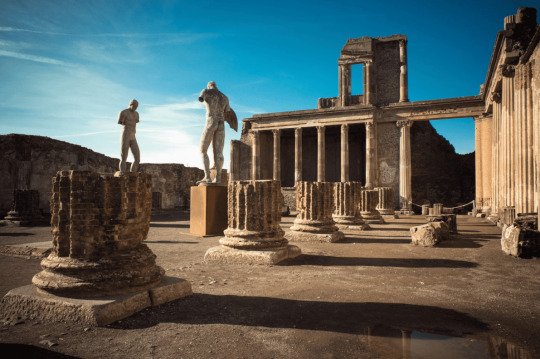

#Tiny House with Elaborate Frescoes Unearthed at Pompeii#Mount Vesuvius#frescoes#fresco painting#paintings#ancient artifacts#archeology#archeolgst#history#history news#ancient history#ancient culture#ancient civilizations#roman history#roman empire#roman art#ancient art#art history#pompeii
937 notes
·
View notes
Text
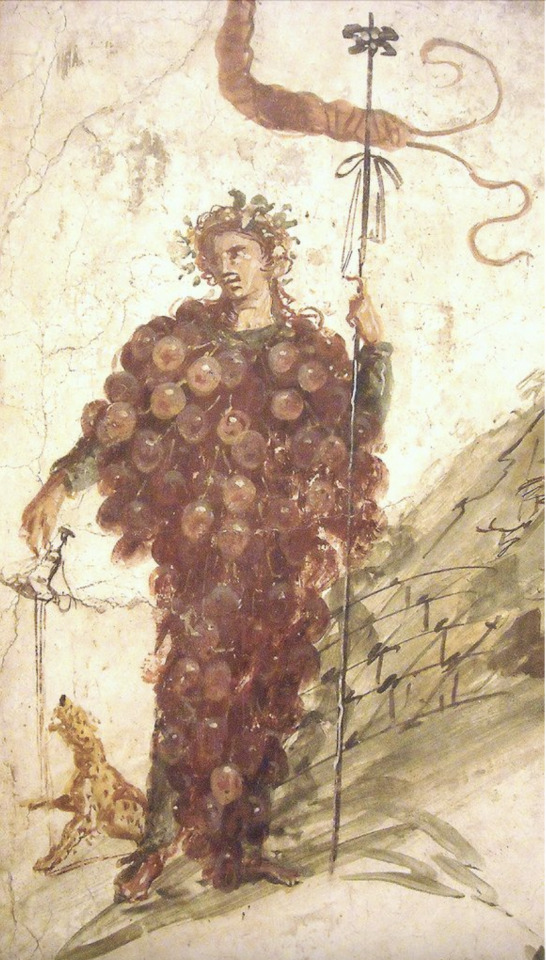
Dionysus as grapes, detail from fresco of Dionysus on Vesuvius, Pompeii, before 79 A.D. Museo Archeologico Nazionale, Naples
#how does it feel to be the coolest person ever#me two bottles of white wine deep#tagamemnon#queueusque tandem abutere catilina patientia nostra#ancient rome#ancient art#archaeology#frescoes#fresco painting
735 notes
·
View notes
Text

Dancing Maenad in a silk dress. Roman fresco from Pompeii, 1st century AD.
#maenads#maenad#roman#ancient rome#romans#frescoes#fresco#art#history#europe#european#antiquity#pompeii#frescos#casa del naviglio#italy#silk dress#dress#naples
884 notes
·
View notes
Text

Exactly what Godzilla's role was in the 1348 Siege of Budapest is still debated.
416 notes
·
View notes
Text

Angel Dust Doodle :)
#hazbin art#hazbin hotel#hazbin angel dust#hazbin fanart#hazbin fandom#angel dust#sketch#artwork#digital illustration#drawing#digital art#artists on tumblr#doodle#original art#procreate#frescoes#adobe#practice
358 notes
·
View notes
Text



Mayan Frescoes at the Bonampak Site in Chiapas, Mexico, 11th Century
141 notes
·
View notes